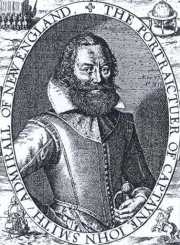She confessed afterward that she was unexpectedly nervous in the countdown to the webcast, but quickly relaxed as the program got rolling.
The webcast, aimed at fourth-through-eighth graders, was designed to be a fast-paced exploration of Jamestown history and its legacies of democracy, cultural diversity and the spirit of exploration. It contained interviews with historians, a tall-ship captain, an archaeologist, a Virginia Indian chief and even a former astronaut.


4 comments:
Right. But as you've seen, that kind of talk doesn't sway me.
They're part Indian and part black, you mean. Similarly, most tribes are part Indian and part non-Indian these days.
I still see only your opinion about the Pequots here. If you've given us anything resembling a fact, I must've missed it.
Here's Wikipedia's version of modern Pequot history. Now let's see you present evidence of Pequot history--not your opinion again--contradicting it:
http://en.wikipedia.org/wiki/Pequot
By the 1910 census, the Pequot population was enumerated at a low of 66. In terms of population, the Pequot reached their nadir several decades later. Pequot numbers grew appreciably--the Mashantucket Pequot especially--during the 1970s and 1980s when Mashantucket Pequot Chairman, Skip Hayward was able to enjoin Pequots to return to their tribal homeland by implementing the push to Federal recognition and sound economic development.
You could quote from the books by Brett Fromson and Jeff Benedict, but I've already debated their positions a dozen or two times. Here's a typical rebuttal to Benedict's claims:
http://www.indiangaming.org/library/articles/novel-attack.shtml
Early reviews of the book focused on the book’s voluminous research, but Benedict’s research is highly selective. Many of his interviews are with disgruntled former BIA employees and the ex-wife of former tribal chairman Skip Hayward, hardly unbiased sources. Anthropologists like myself who work with tribal histories and genealogies know that public documents and anecdotes are not sufficient for constituting a complete tribal history, particularly one that spans centuries. Even more problematically, Benedict spoke to no more than a couple of Mashantucket Pequot tribal members for the book, rendering his work only one-half of a conversation at best.
Post a Comment